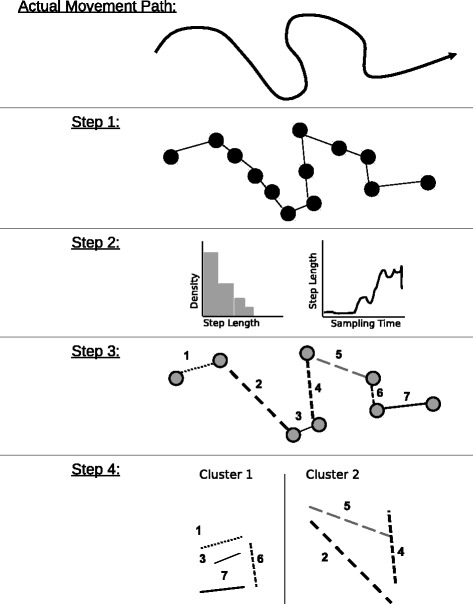Fig. 1.

Overview of important steps throughout a segmentation analysis. In general, the actual continuous movement path of an organism is sampled as a set of consecutive relocations (Step 1; e.g., field work). Step 2: exploratory and descriptive analyses of path characteristics exploring and visualizing of the data structure. Step 3: applying one or several path segmentation method(s) to objectively distinguish different movement states. Step 4: Some methods require the use of clustering and summary statistics to quantify differences in distinguished movement states, and to facilitate biological interpretation in terms of behavioral modes
